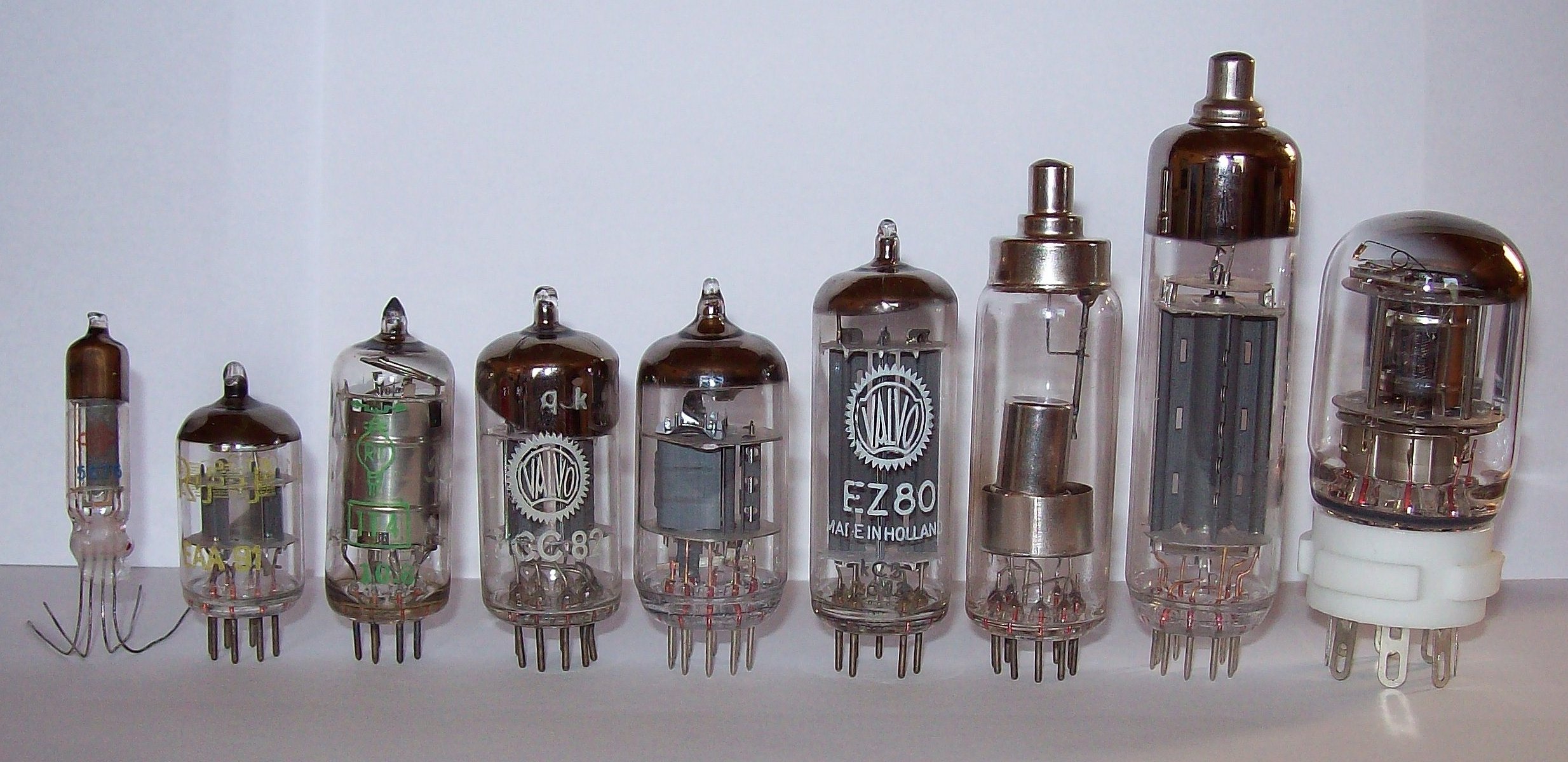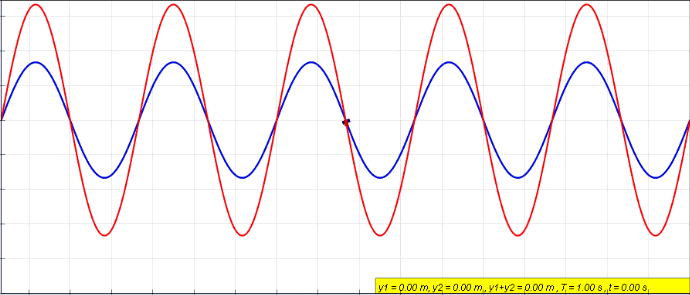|
Gyrotron
High-power 140 GHz gyrotron for plasma heating in the Wendelstein 7-X fusion experiment, Germany. A gyrotron is a class of high-power linear-beam vacuum tubes that generates millimeter-wave electromagnetic waves by the cyclotron resonance of electrons in a strong magnetic field. Output frequencies range from about 20 to 527 GHz, covering wavelengths from microwave to the edge of the terahertz gap. Typical output powers range from tens of kilowatts to 1–2 megawatts. Gyrotrons can be designed for pulsed or continuous operation. The gyrotron was invented by Soviet scientists at NIRFI, based in Nizhny Novgorod, Russia. Principle The gyrotron is a type of free-electron maser that generates high-frequency electromagnetic radiation by stimulated cyclotron resonance of electrons moving through a strong magnetic field. It can produce high power at millimeter wavelengths because as a ''fast-wave'' device its dimensions can be much larger than the wavelength of the radiation. This i ... [...More Info...] [...Related Items...] OR: [Wikipedia] [Google] [Baidu] |
Terahertz Gap
Terahertz radiation – also known as submillimeter radiation, terahertz waves, tremendously high frequency (THF), T-rays, T-waves, T-light, T-lux or THz – consists of electromagnetic waves within the ITU-designated band of frequencies from 0.3 to 3 terahertz (THz), although the upper boundary is somewhat arbitrary and is considered by some sources as 30 THz. One terahertz is 1012 Hz or 1000 GHz. Wavelengths of radiation in the terahertz band correspondingly range from 1 mm to 0.1 mm = 100 µm. Because terahertz radiation begins at a wavelength of around 1 millimeter and proceeds into shorter wavelengths, it is sometimes known as the ''submillimeter band'', and its radiation as ''submillimeter waves'', especially in astronomy. This band of electromagnetic radiation lies within the transition region between microwave and far infrared, and can be regarded as either. Terahertz radiation is strongly absorbed by the gases of ... [...More Info...] [...Related Items...] OR: [Wikipedia] [Google] [Baidu] |
Microwave
Microwave is a form of electromagnetic radiation with wavelengths ranging from about one meter to one millimeter corresponding to frequency, frequencies between 300 MHz and 300 GHz respectively. Different sources define different frequency ranges as microwaves; the above broad definition includes both Ultra high frequency, UHF and Extremely high frequency, EHF (millimeter wave) bands. A more common definition in radio-frequency engineering is the range between 1 and 100 GHz (wavelengths between 0.3 m and 3 mm). In all cases, microwaves include the entire Super high frequency, SHF band (3 to 30 GHz, or 10 to 1 cm) at minimum. Frequencies in the microwave range are often referred to by their Radio band#IEEE, IEEE radar band designations: S band, S, C band (IEEE), C, X band, X, Ku band, Ku, K band (IEEE), K, or Ka band, Ka band, or by similar NATO or EU designations. The prefix ' in ''microwave'' is not meant to suggest a wavelength in the M ... [...More Info...] [...Related Items...] OR: [Wikipedia] [Google] [Baidu] |
W7-X Gyrotron
The Wendelstein 7-X (abbreviated W7-X) reactor is an experimental stellarator built in Greifswald, Germany, by the Max Planck Institute for Plasma Physics (IPP), and completed in October 2015.Introduction – the Wendelstein 7-X stellarator Retrieved 5 November 2014. Its purpose is to advance stellarator technology: though this experimental reactor will not produce electricity, it is used to evaluate the main components of a future plant; it was developed based on the predecessor experimental reactor. , ... [...More Info...] [...Related Items...] OR: [Wikipedia] [Google] [Baidu] |
Vacuum Tube
A vacuum tube, electron tube, valve (British usage), or tube (North America), is a device that controls electric current flow in a high vacuum between electrodes to which an electric voltage, potential difference has been applied. The type known as a thermionic tube or thermionic valve utilizes thermionic emission of electrons from a hot cathode for fundamental electronic functions such as signal amplifier, amplification and current rectifier, rectification. Non-thermionic types such as a vacuum phototube, however, achieve electron emission through the photoelectric effect, and are used for such purposes as the detection of light intensities. In both types, the electrons are accelerated from the cathode to the anode by the electric field in the tube. The simplest vacuum tube, the diode (i.e. Fleming valve), invented in 1904 by John Ambrose Fleming, contains only a heated electron-emitting cathode and an anode. Electrons can only flow in one direction through the device—fro ... [...More Info...] [...Related Items...] OR: [Wikipedia] [Google] [Baidu] |
Electron Gun
An electron gun (also called electron emitter) is an electrical component in some vacuum tubes that produces a narrow, collimated electron beam that has a precise kinetic energy. The largest use is in cathode-ray tubes (CRTs), used in nearly all television sets, computer displays and oscilloscopes that are not flat-panel displays. They are also used in field-emission displays (FEDs), which are essentially flat-panel displays made out of rows of extremely small cathode-ray tubes. They are also used in microwave linear beam vacuum tubes such as klystrons, inductive output tubes, travelling wave tubes, and gyrotrons, as well as in scientific instruments such as electron microscopes and particle accelerators. Electron guns may be classified by the type of electric field generation (DC or RF), by emission mechanism ( thermionic, photocathode, cold emission, plasmas source), by focusing (pure electrostatic or with magnetic fields), or by the number of electrodes. Chara ... [...More Info...] [...Related Items...] OR: [Wikipedia] [Google] [Baidu] |
Transverse Mode
A transverse mode of electromagnetic radiation is a particular electromagnetic field pattern of the radiation in the plane perpendicular (i.e., transverse) to the radiation's propagation direction. Transverse modes occur in radio waves and microwaves confined to a waveguide, and also in light waves in an optical fiber and in a laser's optical resonator. Transverse modes occur because of boundary conditions imposed on the wave by the waveguide. For example, a radio wave in a hollow metal waveguide must have zero tangential electric field An electric field (sometimes E-field) is the physical field that surrounds electrically charged particles and exerts force on all other charged particles in the field, either attracting or repelling them. It also refers to the physical field fo ... amplitude at the walls of the waveguide, so the transverse pattern of the electric field of waves is restricted to those that fit between the walls. For this reason, the modes supported by a wav ... [...More Info...] [...Related Items...] OR: [Wikipedia] [Google] [Baidu] |
Standing Waves
In physics, a standing wave, also known as a stationary wave, is a wave that oscillates in time but whose peak amplitude profile does not move in space. The peak amplitude of the wave oscillations at any point in space is constant with respect to time, and the oscillations at different points throughout the wave are in phase. The locations at which the absolute value of the amplitude is minimum are called nodes, and the locations where the absolute value of the amplitude is maximum are called antinodes. Standing waves were first noticed by Michael Faraday in 1831. Faraday observed standing waves on the surface of a liquid in a vibrating container. Franz Melde coined the term "standing wave" (German: ''stehende Welle'' or ''Stehwelle'') around 1860 and demonstrated the phenomenon in his classic experiment with vibrating strings. This phenomenon can occur because the medium is moving in the direction opposite to the movement of the wave, or it can arise in a stationary medium ... [...More Info...] [...Related Items...] OR: [Wikipedia] [Google] [Baidu] |
Helix
A helix () is a shape like a corkscrew or spiral staircase. It is a type of smooth space curve with tangent lines at a constant angle to a fixed axis. Helices are important in biology, as the DNA molecule is formed as two intertwined helices, and many proteins have helical substructures, known as alpha helices. The word ''helix'' comes from the Greek word ''ἕλιξ'', "twisted, curved". A "filled-in" helix – for example, a "spiral" (helical) ramp – is a surface called '' helicoid''. Properties and types The ''pitch'' of a helix is the height of one complete helix turn Turn may refer to: Arts and entertainment Dance and sports * Turn (dance and gymnastics), rotation of the body * Turn (swimming), reversing direction at the end of a pool * Turn (professional wrestling), a transition between face and heel * Turn, ..., measured parallel to the axis of the helix. A double helix consists of two (typically congruent) helices with the same axis, differing by a tran ... [...More Info...] [...Related Items...] OR: [Wikipedia] [Google] [Baidu] |
Waveguide
A waveguide is a structure that guides waves, such as electromagnetic waves or sound, with minimal loss of energy by restricting the transmission of energy to one direction. Without the physical constraint of a waveguide, wave intensities decrease according to the inverse square law as they expand into three-dimensional space. There are different types of waveguides for different types of waves. The original and most common meaningInstitute of Electrical and Electronics Engineers, “The IEEE standard dictionary of electrical and electronics terms”; 6th ed. New York, N.Y., Institute of Electrical and Electronics Engineers, c1997. IEEE Std 100-1996. d. Standards Coordinating Committee 10, Terms and Definitions; Jane Radatz, (chair)/ref> is a hollow conductive metal pipe used to carry high frequency radio waves, particularly microwaves. Dielectric waveguides are used at higher radio frequencies, and transparent dielectric waveguides and optical fibers serve as waveguides ... [...More Info...] [...Related Items...] OR: [Wikipedia] [Google] [Baidu] |
Magnetron
The cavity magnetron is a high-power vacuum tube used in early radar systems and currently in microwave ovens and linear particle accelerators. It generates microwaves using the interaction of a stream of electrons with a magnetic field while moving past a series of cavity resonators, which are small, open cavities in a metal block. Electrons pass by the cavities and cause microwaves to oscillate within, similar to the functioning of a whistle producing a tone when excited by an air stream blown past its opening. The resonant frequency of the arrangement is determined by the cavities' physical dimensions. Unlike other vacuum tubes, such as a klystron or a traveling-wave tube (TWT), the magnetron cannot function as an amplifier for increasing the intensity of an applied microwave signal; the magnetron serves solely as an oscillator, generating a microwave signal from direct current electricity supplied to the vacuum tube. The use of magnetic fields as a means to control t ... [...More Info...] [...Related Items...] OR: [Wikipedia] [Google] [Baidu] |
Superconducting Magnet
A superconducting magnet is an electromagnet made from coils of superconducting wire. They must be cooled to cryogenic temperatures during operation. In its superconducting state the wire has no electrical resistance and therefore can conduct much larger electric currents than ordinary wire, creating intense magnetic fields. Superconducting magnets can produce stronger magnetic fields than all but the strongest non-superconducting electromagnets, and large superconducting magnets can be cheaper to operate because no energy is dissipated as heat in the windings. They are used in Magnetic resonance imaging, MRI instruments in hospitals, and in scientific equipment such as Nuclear magnetic resonance, NMR spectrometers, mass spectrometers, Fusion power, fusion reactors and particle accelerators. They are also used for levitation, guidance and propulsion in a SCMaglev, magnetic levitation (maglev) railway system being constructed in Japan. Construction Cooling During operation, the mag ... [...More Info...] [...Related Items...] OR: [Wikipedia] [Google] [Baidu] |







